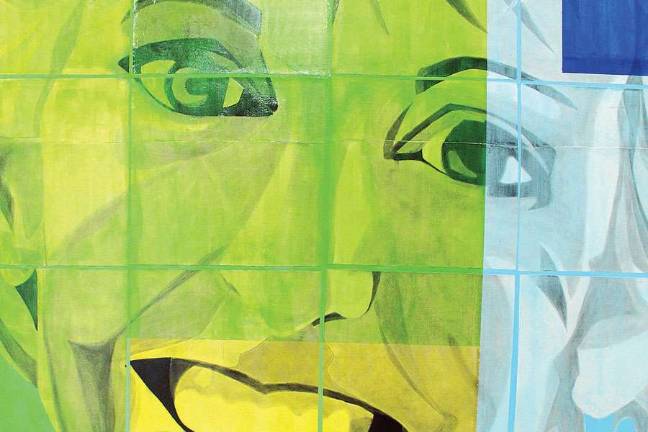East Sider Heals Through Art

Eliette Markhbein, an artist who lives on the Upper East Side, suffered a traumatic brain injury (TBI) in 2004 that changed her life. A speeding car rear-ended her vehicle, leaving her with frontal lobe damage and spinal injuries. During her rehabilitation at Mt. Sinai, Markhbein turned to painting to deal with her intense pain. Not only did she realize that painting alleviated her suffering, she also discovered she was good at it. WHACK'ed...and then everything was different is the name of her upcoming exhibit, running from March 15 through the end of April at the MSB Gallery at NYU Medical Center in honor of TBI survivors. Among the portraits in the exhibit are those of Keith Richards and Trisha Meili, the Central Park Jogger. Together with the Brain Injury Association of America and the Society for the Arts in Healthcare, Markhbein plans to auction off the portraits to fund the development of a pilot artist-in-residence program to serve people with TBI. Markhbein sat down with Our Town to discuss her injury and the healing power of art. OT: What was your life like before your accident? Markhbein: I was a journalist for 25 years, living at high speed, traveling all over the world. Before, I never questioned myself about anything I did and it all came naturally. I was very good and successful at what I was doing, and I was probably at the height of my career when bang! All of it disappeared. How did your life change after the accident? At first, when you are recovering from brain injury, you cannot do anything or you do one thing a day; either balancing your checkbook or your therapy session or doctor's appointment. The functions you used to do seamlessly, the transitions and the brain patterns of receiving information, do not work anymore. You have to rewire your brain so you can go from A to B, but you can't do it directly because of the damage. At what point in your rehab process did you start painting? When did you realize you wanted to help other patients through art? I started painting on my own a year into rehab and felt something incredible. One of the biggest things about it was that it helped me communicate to a lot of people what I was feeling because I was having a hard time with words. Also, I was in tremendous pain during my rehab and when I painted, I didn't have any. It became totally addictive. I ended up painting maybe six or seven hours a day, and for those six or seven hours, I didn't feel anything. I wanted to give this feeling to other TBI patients in Mt. Sinai, so I proposed doing a therapeutic arts program and it went very well. I did it for four years. The thing about painting is it gave me a distance from which I could look unconsciously at the TBI, at my life, challenges, frustrations, pains, happiness. And I wanted to share that. What inspired the "draw/cut/paste" technique in the upcoming exhibit? This process is a parallel to the three phases of traumatic brain injury, which are fractured, reassembled and whole. I took a black-and-white photo of myself, and from the photo I did a drawing. It was raining that day, so I folded it up and put it in my bag. And the next day when I opened it and saw all the creases, I was like, 'Oh, cool, this is like a grid!' so what I did next is I colored some of the grids and thought, this is really the way I feel: fractured, disassembled with TBI. But it was not fractured enough for me. So I cut every square and reassembled it on a black background, kind of messed up, and said, 'Wow, this is my self-portrait, this is how I truly feel at this point.'